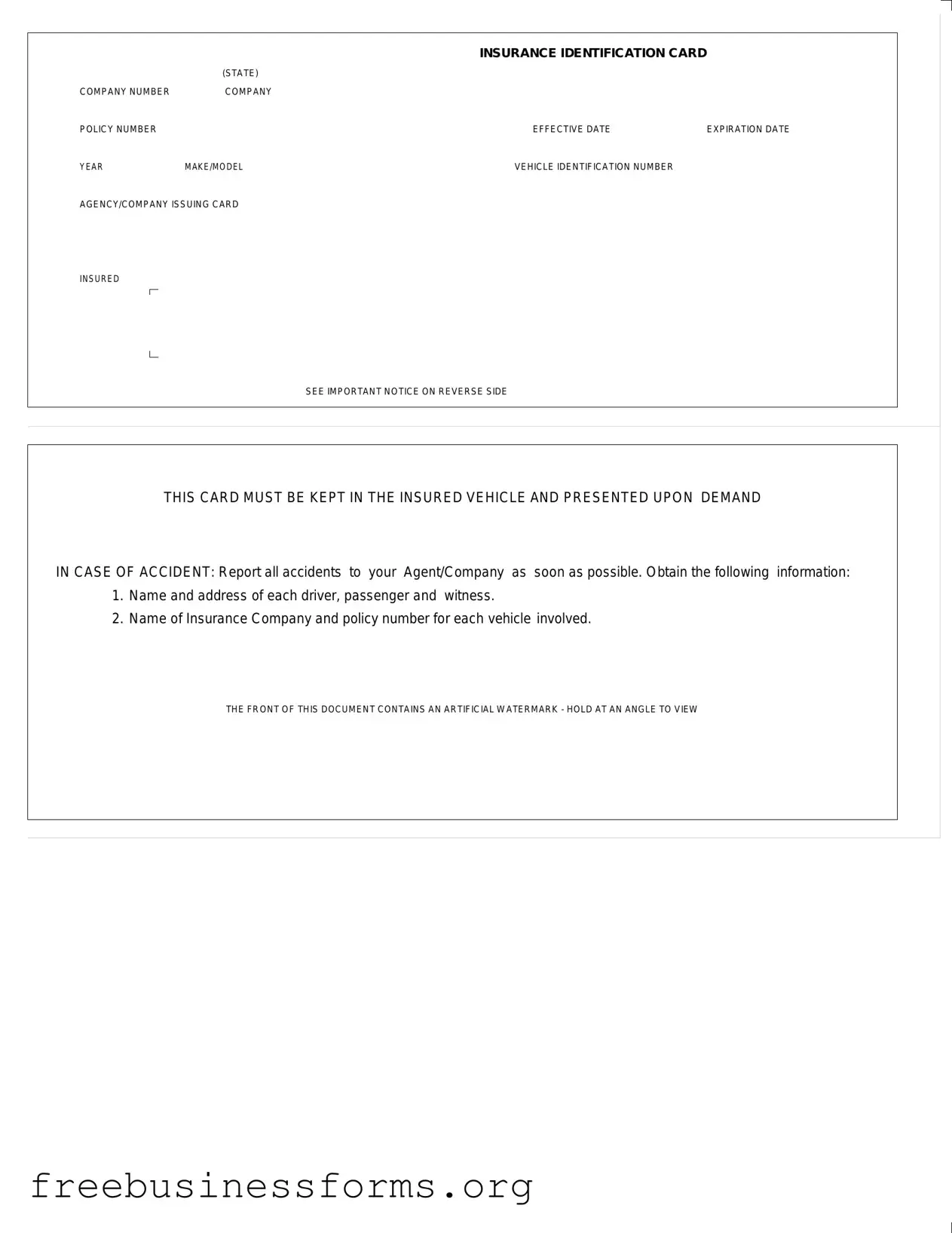The Auto Insurance Card serves as a crucial document for drivers, providing essential information about their insurance coverage. It includes key details such as the insurance identification card number, the company number, and the specific policy number that identifies the coverage in effect. Additionally, the card lists important dates, including the effective date and expiration date of the policy, ensuring that drivers are aware of their coverage timeline. Vehicle information is also prominently displayed, featuring the year, make, and model of the insured vehicle, along with its unique Vehicle Identification Number (VIN). This card is issued by the insurance agency or company and must be kept in the insured vehicle at all times. In the event of an accident, it is critical to present this card upon request. Drivers are reminded to report any accidents to their insurance agent or company promptly, gathering necessary details such as the names and addresses of all drivers, passengers, and witnesses involved. For added security, the front of the card contains an artificial watermark, which can be viewed by holding the card at an angle. This document not only confirms insurance coverage but also provides guidance on the steps to take following an accident.

